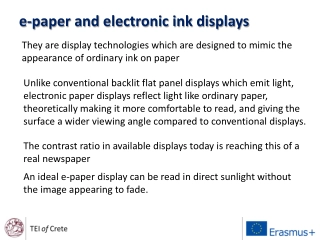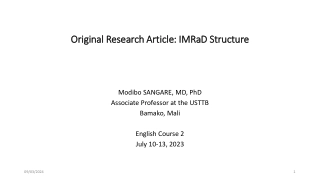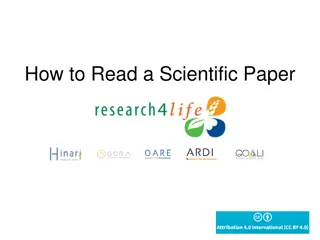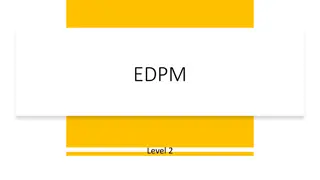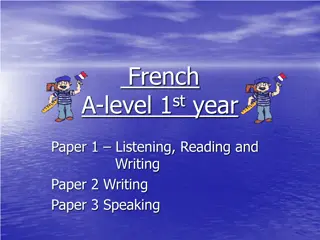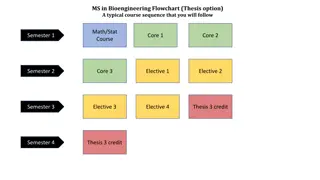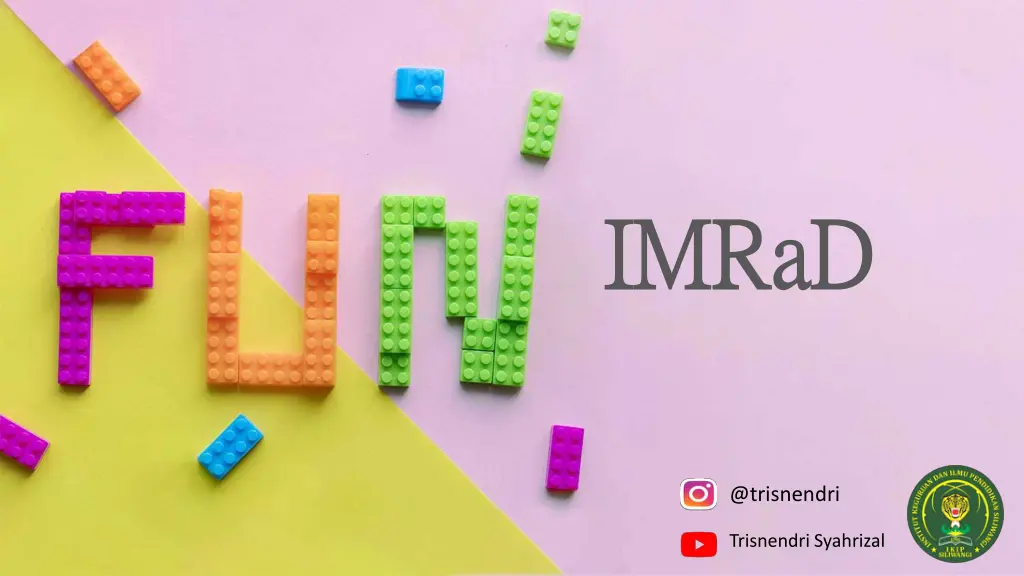
Nurturing Teacher-Student Relationship in Online English Teaching
Explore key elements of IMRaD structure in an academic study focusing on nurturing teacher-student relationships during online English teaching. Dive into the introduction, methodology, results, and discussions to understand the research process and findings.
Download Presentation

Please find below an Image/Link to download the presentation.
The content on the website is provided AS IS for your information and personal use only. It may not be sold, licensed, or shared on other websites without obtaining consent from the author. If you encounter any issues during the download, it is possible that the publisher has removed the file from their server.
You are allowed to download the files provided on this website for personal or commercial use, subject to the condition that they are used lawfully. All files are the property of their respective owners.
The content on the website is provided AS IS for your information and personal use only. It may not be sold, licensed, or shared on other websites without obtaining consent from the author.
E N D
Presentation Transcript
IMRaD IMRaD @trisnendri Trisnendri Syahrizal
@trisnendri Trisnendri Syahrizal
IMRaD M I Introduction Methodology R a D Discussion Result
IMRaD Introduction Why did you start? Methodology What did you do? Result Discussion What does it all mean? What did you find?
Title Page @trisnendri Trisnendri Syahrizal
T Title Page Title Author Sri Supiah Cahyati Nurturing Teacher- Students Relationship during online Teaching English to Young Learners Author Contact srisupiahcahyati@ikipsili wangi.ac.id Affiliation IKIP SILIWANGI
Introduction @trisnendri Trisnendri Syahrizal
IMRaD I Introduction The author should explain key terms, give historical information on the problem studied, and cite other studies that have obtained relevant results. In other words, introduction part is the answer to the question why did you do the research? then followed by background for conducting the research.
Method @trisnendri Trisnendri Syahrizal
IMRaD M Method The author describes the research design and methodology used to complete the study. The information usually covers the context and setting of the study, the study design, population, sampling strategy, intervention (if any), the main study variables, data collection instruments and procedures, as well as outline of data analysis methods. In other words, the methodology part answers the question about how did you do the research?
Result @trisnendri Trisnendri Syahrizal
IMRaD R Result The result covers the research findings which answer the research questions. In other words, the result part is to answer the question about: what did you find in the research?
Discussion @trisnendri Trisnendri Syahrizal
IMRaD D Discussion This part provides readers with interpretation of the research findings with reference to previous research. Specifically, discussion part elaborates the explanation of the data, for example the relationship between variables, relation to other research results, and exceptions of the data with respect to the literature mentioned earlier. Then, the explanation is followed by implication (both theoretical and practical) of the research. If any, strength and limitation of the research are also presented.
Conclusions @trisnendri Trisnendri Syahrizal
C Conclusions This part presents the conclusion of the research findings, which was built from the discussion and its relation to the findings of other researches. The author can also offer perspectives for further research.
Acknowledgment @trisnendri Trisnendri Syahrizal
A Acknowledgment This part is usually devoted to thanking any persons or institutions which made the research possible. They can be people who contributed to the research, but did not contribute sufficiently to earn authorship. Permission from individuals acknowledged in this part is necessary.
References @trisnendri Trisnendri Syahrizal
R References In this part, the author writes all the resources used for obtaining information. A complete reference includes all of the authors names, the year of publication, the title of the article, the journal name, the volume number, and page numbers. The most common formats of writing references part are American Psychology Association (APA), MLA, Harvard, Chicago. The selection of the format is based on the requirement of paper template in the journal which the author chooses for publication.
Lets Observe @trisnendri Trisnendri Syahrizal
http://bit.ly/jurnalbhsindonesia http://bit.ly/artikelbk http://bit.ly/artikelpgsd http://bit.ly/jurnalmtk http://bit.ly/artikelpaud * dipilih sesuai prodinya

